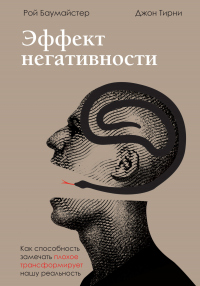149
О самых ранних гравировках см. C. Henshilwood et al. (2002), "Emergence of modern human behavior"; D. Perlman (2002), "Cave's ancient treasure: 77,000-year-old artifacts could mean human culture began in Africa," SFGate, January 11, www.sfgate.com/news/article/Cave-s-ancient-treasure-77–000-year-old-2883686.php; and P. J. Texier et al. (2010), "A Howiesons Poort tradition of engraving ostrich eggshell containers dated to 60,000 years ago at Diepkloof Rock Shelter, South Africa," Proceedings of the National Academy of Sciences 107 (14), 1680–1685. Возраст некоторых гравировок достигает 500 000 лет, что позволяет предположить, что гравировка, возможно, восходит к Homo erectus, но интерпретация этих единичных примеров неоднозначна. См. J. Joordens et al. (2015), "Homo erectus at Trinil on Java used shells for tool production and engraving," Nature 518, 228–231; и H. Thompson (2014), "Zigzags on a shell from Java are the oldest human engravings," Smithsonian, December 3, www.smithsonianmag.com/science-nature/oldest-engraving-shell-tools-zigzags-art-java-indonesia-humans-180953522/. Хотя существует единичный пример возможной гравировки с Явы возрастом 500 000 лет, сделанной Homo erectus, в настоящее время его следует интерпретировать с осторожностью, поскольку нет других доказательств, подтверждающих идею, что представители этого вида могли вносить систематические изменения в изображение.
150
О первых лодках см. V. Macauley (2005), "Single, rapid coastal settlement of Asia revealed by analysis of complete mitochondrial genomes," Science 308 (5724), 1034–1036; A. Thorne et al. (1999), "Australia's oldest human remains: Age of the Lake Mungo 3 skeleton," Journal of Human Evolution 36 (6), 591–612; J. O'Connell and J. Allen (1998), "When did humans first arrive in Greater Australia and why is it important to know?," Evolutionary Anthropology 6 (4), 132–146; и R. Bednarik (2003), "Seafaring in the Pleistocene," Cambridge Archaeological Journal 13 (1), 41–66.
151
О рыбалке в древности см. S. O'Connor et al. (2011), "Pelagic fishing at 42,000 years before the present and the maritime skills of modern humans," Science 334, 1117–1121; и Z. Corbyn (2011), "Archaeologists land world's oldest fishing hook," Nature, November 24. Существование самого древнего рыболовного крючка подтверждается анализом найденных в Китае человеческих костей возрастом 40 000 лет, который показал, что в рацион этого человека входила пресноводная рыба. См. Y. Yaowu Hu et al. (2009), "Stable isotope dietary analysis of the Tianyuan 1 early modern human," Proceedings of the National Academy of Sciences 106 (27), 10971–10974; и M. Price (2016), "World's oldest fishing hook found in Okinawa," Science, September 16.
152
О первых украшенных могилах см. G. Giacobini (2007), "Richness and diversity of burial rituals in the Upper Paleolithic," Diogenes 54 (2), 19–39. О наскальном искусстве см. M. Aubert et al. (2014), "Pleistocene cave art from Sulawesi, Indonesia," Nature 514, 223–227.
153
О первых жилищах см. J. Kolen (2000), "Hominids without homes: On the nature of Middle Paleolithic settlement in Europe," in W. Roebroeks et al., eds., The Middle Paleolithic occupation of Europe (Leiden: Leiden University Press); и P. Mellars (1996), The Neanderthal legacy: An archaeological perspective from Western Europe (Princeton, NJ: Princeton University Press).
154
О костяных иглах см. L. Backwell et al. (2008), "Stone Age bone tools from the Howiesons Poort layers, Sibudu Cave, South Africa," Journal of Archaeological Science 35 (6), 1566–1580; и M. Collard et al. (2016), "Faunal evidence for a difference in clothing use between Neanderthals and early modern humans in Europe," Journal of Anthropological Archeology 44B, 235–246.
155
Утверждения о том, что ювелирные изделия были сделаны неандертальцами, подвергались сомнению: сами они изготовили украшения или им дали их люди? См. L. Geggel (2016), "Neanderthals fashioned jewelry out of animal teeth and shells," Live Science, September 27; E. Calloway (2014), "Neanderthals made some of Europe's oldest art," Nature, September 1; и O. Rudgard (2018), "Neanderthal art was far better than previously thought as scientists find they made earliest cave paintings," Daily Telegraph, February 22. То же самое противоречие связано с существованием орлиных когтей и панцирей: действительно ли они были сделаны или перфорированы неандертальцами и их носили как украшения? См. E. Calloway (2015), "Neanderthals wore eagle talons as jewelry," Nature, March 11; D. Hoffman et al. (2018), "Symbolic use of marine shells and mineral pigments by Iberian Neandertals 115,000 years ago," Science Advances 4 (2), 5255; S. McBrearty and A. Brooks (2000), "The revolution that wasn't: A new interpretation of the origin of modern human behavior," Journal of Human Evolution 39, 453–563; E. Yong (2018), "A cultural leap at the dawn of humanity," Atlantic, March 15; R. Becker (2018), "Ancient cave paintings turn out to be by Neanderthals, not modern humans," The Verge, February 22; J. Rodrigues-Vidal et al. (2014), "A rock engraving made by Neanderthals in Gibraltar," Proceedings of the National Academy of Sciences 111 (37), 13301–13306; E. Calloway (2014), "Neanderthals made some of Europe's oldest art," Nature, September 1; и совсем недавно изданную работу R. White et al. (2019), "Still no archaeological evidence that Neanderthals created Iberian cave art," Journal of Human Evolution (October).
156
Сложные фигуры, подобные скульптуре человека-льва, найденной в Германии, также видим на изображениях человека-птицы из Ласко, женщины-льва из Шове и человека-птицы-лошади из Орнос-де-ла-Пена, сделанных примерно 37 000 лет назад. В Чехословакии 29 000 лет назад люди воссоздавали формы Венеры в керамике, изготовленной из глины. См. R. Dalton (2003), "Lion man takes pride of place as oldest statue," Nature 425, 7; J. Wilford (2009), "Full-figured statuette, 35,000 years old, provides new clues to how art evolved," The New York Times, May 13; R. Lesure (2002), "The Goddess diffracted: Thinking about the figurines of early villages," Current Anthropology 43 (4), 587–610; и R. White (2006), "The women of Brassempouy: A century of research and interpretation," Journal of Archaeological Method and Theory 13 (December), 4. This archaeological tradition falls within the Aurignacian period, from 43,000 years ago to 26,000 years ago. См. также N. Conard (2015), "Cultural evolution during the middle and late Pleistocene in Africa and Eurasia," in W. Henke and I. Tattersall, eds., Handbook of paleoanthropology (Berlin: Springer-Verlag); и N.
























